San Francisco Bay’s Most Underrated Island
We pulled our anchor from the silty seabed of Clipper Cove, then watched our first anchorage shrink in the distance as we made our way to our next destination. Angel Island is the second largest island in San Francisco Bay that offers amazing vistas of the entire Bay Area while also remaining a refuge for wildlife and people looking for solace from the hustle and bustle of the city.
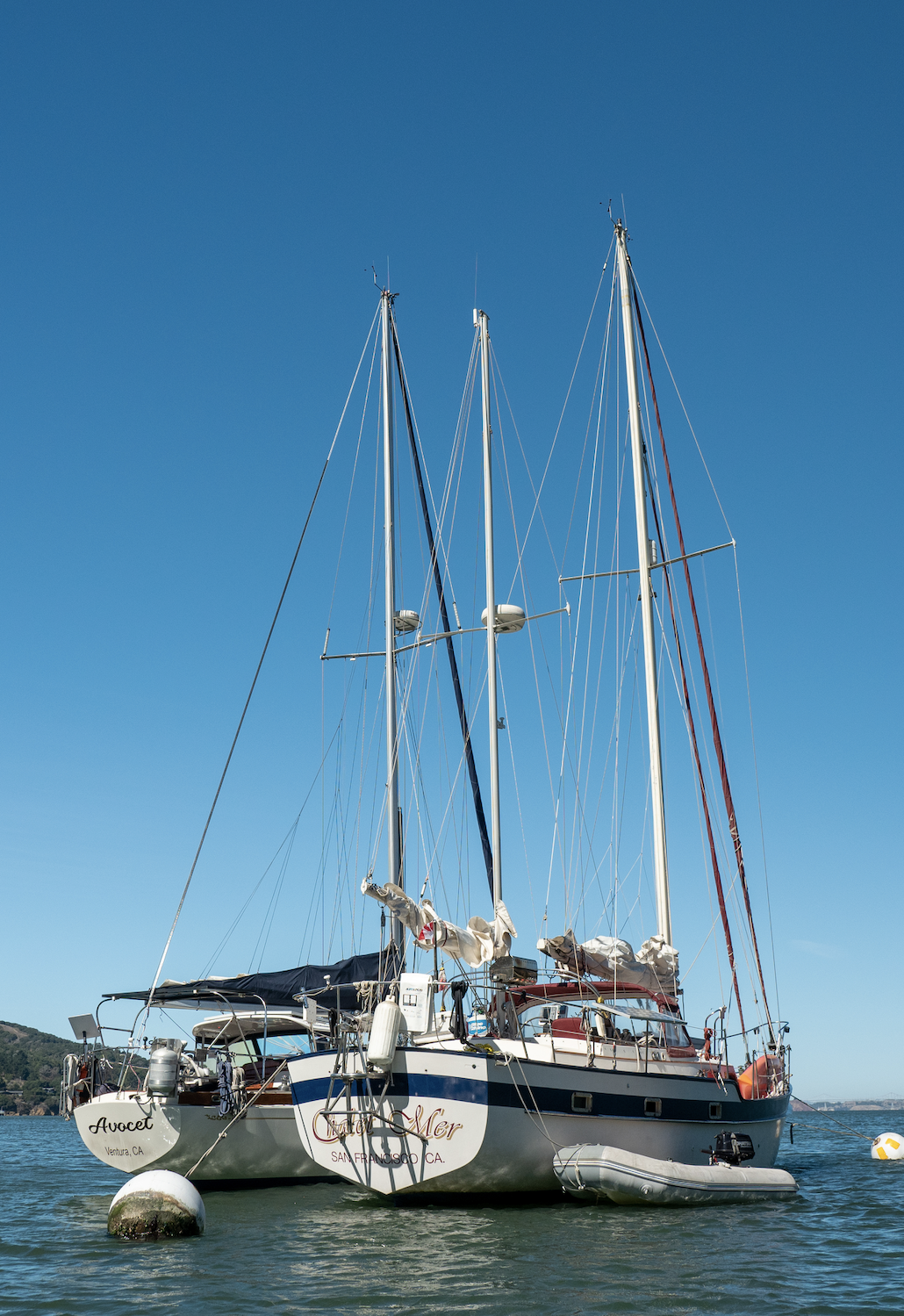 After a lovely beamreach across the Bay, we began to make our approach into Ayala Cove where we hoped to raft up to our new buddies aboard Chalet Mer, Corey and Lucy, to avoid paying the $30/night mooring fee. You see, Ayala Cove is a mooring field and offers no room to anchor so your only option is to grab a mooring; but if you can find a buddy who doesn’t mind paying the full fee you can raft up to them and only pay $15/night which is a little bit more budget friendly.
After a lovely beamreach across the Bay, we began to make our approach into Ayala Cove where we hoped to raft up to our new buddies aboard Chalet Mer, Corey and Lucy, to avoid paying the $30/night mooring fee. You see, Ayala Cove is a mooring field and offers no room to anchor so your only option is to grab a mooring; but if you can find a buddy who doesn’t mind paying the full fee you can raft up to them and only pay $15/night which is a little bit more budget friendly.
I untied our ridiculously large fenders from the pushpit and carried them to the deck where I tied them off our starboard side in preparation to make contact with Chalet Mer. Just like the shoals we passed over, the center of the mooring field is shallow, and naturally gets more shallow the closer you get to shore; so deep keeled vessels beware! Avocet drafts 6.5 feet and we still ended up kissing the bottom at low tide a few times, but (thankfully) never truly got stuck. At first, we attempted to side tie to our friends but after a few moments of watching the boats bob together when the ferry wakes came through we knew that we would feel more comfortable on our own mooring – $30 is a small price to pay for a good night’s sleep and peace of mind that our topside paint would remain on our own boat.
Once we detached the lines that held us together, Corey escorted us from his mooring to the one we chose. The moorings are all first come first serve, and are a bow-and-stern-tie setup which can be a challenge; especially if the mooring field is crowded or if there is heavy wind and/or current. Each set of balls are color coded so yellow goes to yellow, and red goes to red. It would be in your best interest to have sufficient mooring lines (50’ – 100’) to allow both the bow and stern line to double back; meaning one end of the line is cleated to the boat, looped through the mooring then back to the boat on the opposite cleat. This tactic is more efficient than trying to tie off to the mooring ball, allows you to better position your boat between the two mooring balls, and gives you the ability to release yourself from the moorings quickly if need be. Vessels should be secured with the bow facing north-east and stern south-west.
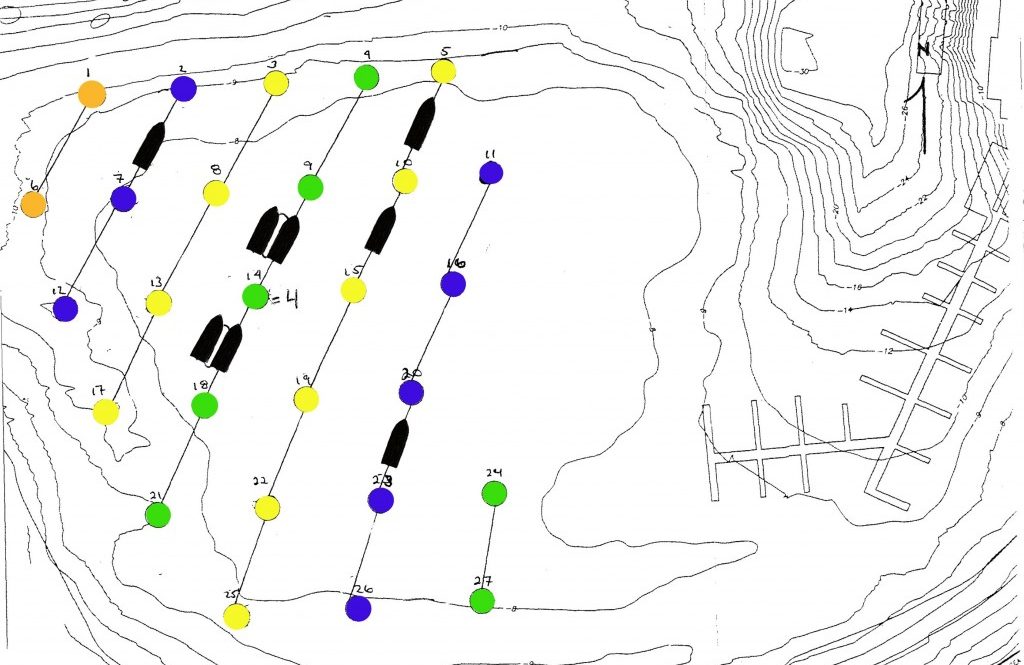
A map of the mooring field, we grabbed 10 and 15
With Corey’s help we were safely secured to the moorings, then launched our dinghy and made our way to shore. In addition to the moorings, Ayala Cove has a day-use dock that is also available on a first-come, first-served basis, with a $15 fee that goes towards maintaining the cove. On the inside of the day-use dock you will find a spot for dinghies near the ramp which is free to tie up for day use. You can also beach your dinghy on the shore, but we found it was very rocky and didn’t want to risk unnecessarily damaging our beloved fiberglass dinghy, especially with the option of a free dinghy dock.
Angel Island’s rogue beauty within the concrete jungle of San Francisco Bay is truly special, but what I found to be even more special and intriguing was the island’s dynamic history, starting with the island’s original inhabitants.
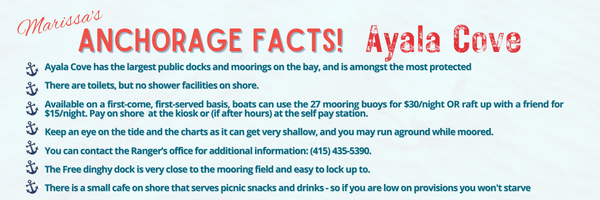
Centuries of History in Less than 1000 Words
Nearly 3,000 years ago, the Coastal Miwok Natives used the island for fishing and hunting. The Miwoks reached the island using boats made from tule reeds. Once on the island, the Miwoks established temporary camps at places now known as Ayala Cove, Camp Reynolds, Fort McDowell, and the infamous Immigration Station.
In August of 1775, Lt. Juan Manuel de Ayala, a Spanish Naval officer, sailed the ship the San Carlos into San Francisco Bay and anchored in what is now know as Ayala Cove. As the first Europeans to sail into the San Francisco Bay, Ayala and his crew spent 40 days making a chart of the area. Following a practice then common among Catholic explorers naming sites for the religious feast days nearest to the time of discovery, Father Vicente, the chaplain of the San Carlos, christened the island Isla de Los Angeles. The next recorded European visitors to the cove were in 1814 when a British sloop-of-war, HMS Racoon, anchored in the cove to make repairs. HMS Racoon gave her name to Raccoon Strait (the reason why Raccoon Strait was originally spelled with only one “c”).
Fast forward a bit to a time where there was growing concern over threats to the Bay Area from Confederate sympathizers, causing the federal government to establish Camp Reynolds (West Garrison) in 1863. Artillery batteries were built near the camp and at Points Stuart, Knox, and Blunt. After the Civil War, Camp Reynolds became an infantry camp that served as a depot for recruits as well as a staging area for troops. U.S. Army presence on the island increased significantly in 1899, when a quarantine station was built at Fort McDowell on the eastern end of the island. This new facility made it possible to isolate troops who had been exposed to contagious diseases while serving overseas in the Spanish-American War and the Philippine Insurrection – these hospitals still stand today, and what’s left of their walls tell many stories.
In addition to its military presence, Angel Island was once called the “Ellis Island of the West,” serving as the West Coast detention center for immigrants seeking U.S. citizenship between 1910 and 1940. In contrast to its New York counterpart, many of the immigrants who came through Angel Island were from Asian countries, primarily China, and were subject to long interrogations and detentions to prevent illegal entry. In 1940, a fire destroyed the main administration building on Angel Island, and the processing of immigrants was relocated to the mainland. Although many of the original buildings were destroyed in the fire, they were replaced with educational monuments that give insight on the brutal Chinese immigrant experience.
After the bombing of Pearl Harbor on December 7, 1941 and the outbreak of World War II, the abandoned Immigration Station was turned into a prisoner of war processing facility. Before the war was over hundreds of Japanese, German, and Italian prisoners were temporarily detained here. At the same time, Fort McDowell itself served as a major point of embarkation for troops headed toward the Pacific war zone. As troops began to return home, a 60-foot-high illuminated “Welcome Home, Well Done” sign was erected on the south-facing slope of the island. In July of 1946, the army decided to close down Fort McDowell, and declare the entire island surplus property.
In 1955, the State Park Commission authorized California State Parks to purchase 38 acres (15 ha) around Ayala Cove, marking the birth of Angel Island State Park. Additional acreage was purchased four years later, in 1959. The last federal Department of Defense personnel withdrew in 1962, turning over the entire island as a state park in December of the same year. For years the buildings sat, empty and deteriorating until over 200 Chinese poems etched into the walls by long-ago immigrants were discovered, inspiring efforts to preserve the Island and commemorate its role in the history of Pacific immigration. The Angel Island Immigration Station was declared a National Historic Landmark in 1997, then later renovated and opened to the public as the California State Park we all enjoy today.
“This place is called an island of immortals, But in fact the mountain wilderness is a prison. Once you see the open net, why throw yourself in? It is only because of empty pockets I can do nothing else.” -Poem carved into barracks wall Angel Island Immigration Station, author unknown.
To The Top!
After chatting with the park ranger we thanked them for their time then made our way towards a trail head; passing by a small cafe, bike rental shop and of course the coves iconic former officers quarters that now serves as a visitor center & museum. The sound of my fake Birkenstocks shuffling through the gravel mixed with our huffing and puffing were sounds of progress up the North Ridge Trail, one of the two main hiking trails found on the island.
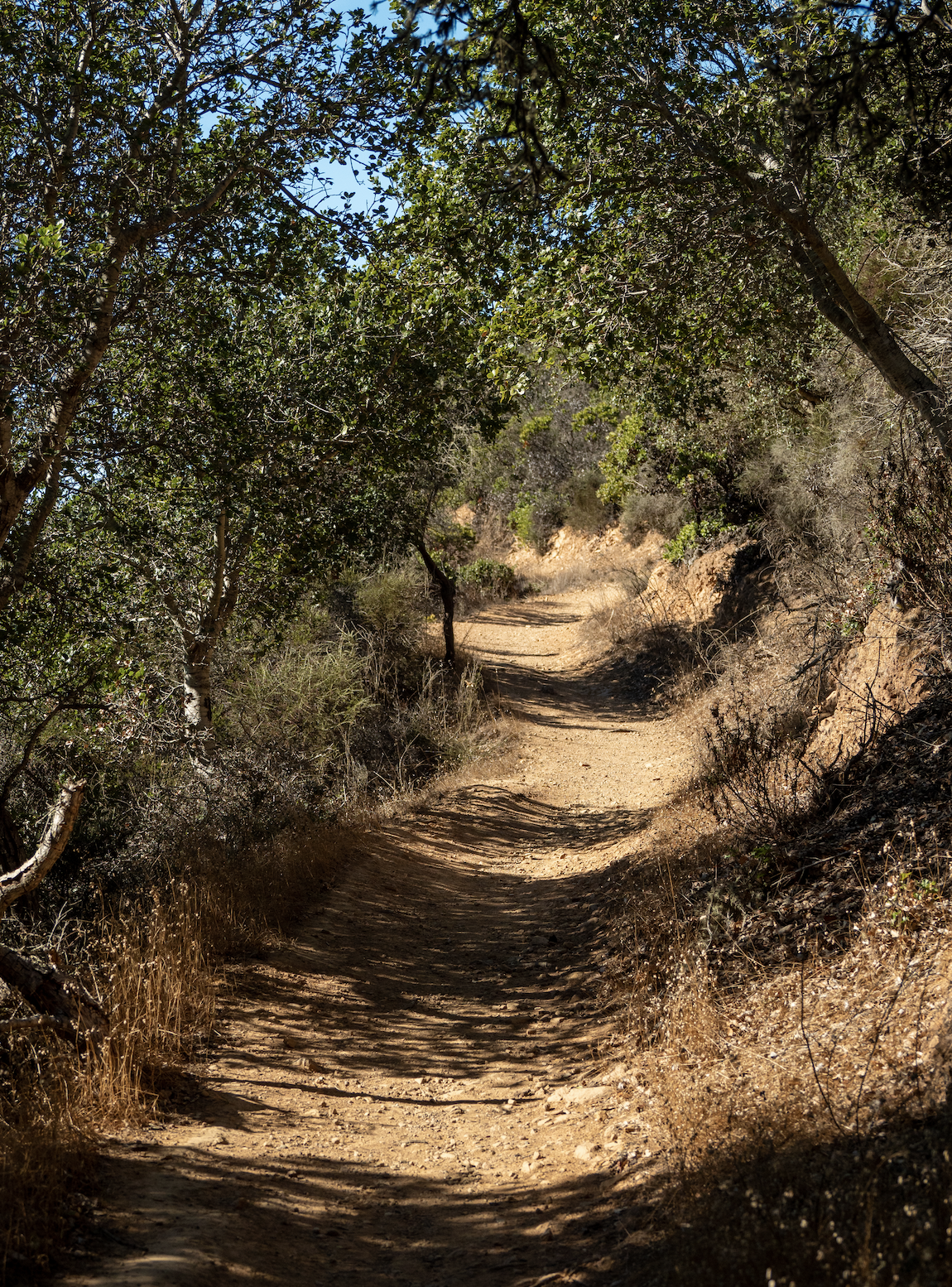 The landscape was very reminiscent of our beloved Santa Cruz Island down south; Oak, bay, and madrone trees provided supple shade on the trail that was lined by sagebrush, chamise, manzanita, toyon, elderberry, and coyote brush – all native species to the island. Eucalyptus, Monterey pine, Douglas fir, Monterey cypress, black locust, Australian tea trees and other trees and shrubs were planted on the island by the military. As we continued along the trail I couldn’t help but stop at every vista to admire Avocet in the cove below, as well as the cityscapes on the horizon. Despite the growing crowd each after each ferry arrival, Chris and I didn’t run into another soul on the entire trail making us feel like we had the entire 3.06 square mile island to ourselves.
The landscape was very reminiscent of our beloved Santa Cruz Island down south; Oak, bay, and madrone trees provided supple shade on the trail that was lined by sagebrush, chamise, manzanita, toyon, elderberry, and coyote brush – all native species to the island. Eucalyptus, Monterey pine, Douglas fir, Monterey cypress, black locust, Australian tea trees and other trees and shrubs were planted on the island by the military. As we continued along the trail I couldn’t help but stop at every vista to admire Avocet in the cove below, as well as the cityscapes on the horizon. Despite the growing crowd each after each ferry arrival, Chris and I didn’t run into another soul on the entire trail making us feel like we had the entire 3.06 square mile island to ourselves.
“FOUND IT!” I said into the ground as I unearthed my treasure. You see, I have a newish hobby, called Geocaching, which is essentially real life treasure hunting that you can do through the geocaching app. It is a wonderful community and a fun way to add a little extra adventure to your time outdoors. Since we had cast off I had been determined to find and log every cache possible which is why this first cache find on Angel Island was so exciting. I showed Chris the small pill shaped container and unraveled the log that was tightly wrapped inside. There was no room to add our names, and we didn’t have a pen, but I was still able to log the cache on the app, celebrating the first of many finds while cruising. After my find was confirmed in the digital log, I returned the geocache back to its hiding place and rejoined Chris up the trail. He had already reached the summit of the island, called Mt. Livermore and was taking it all in.
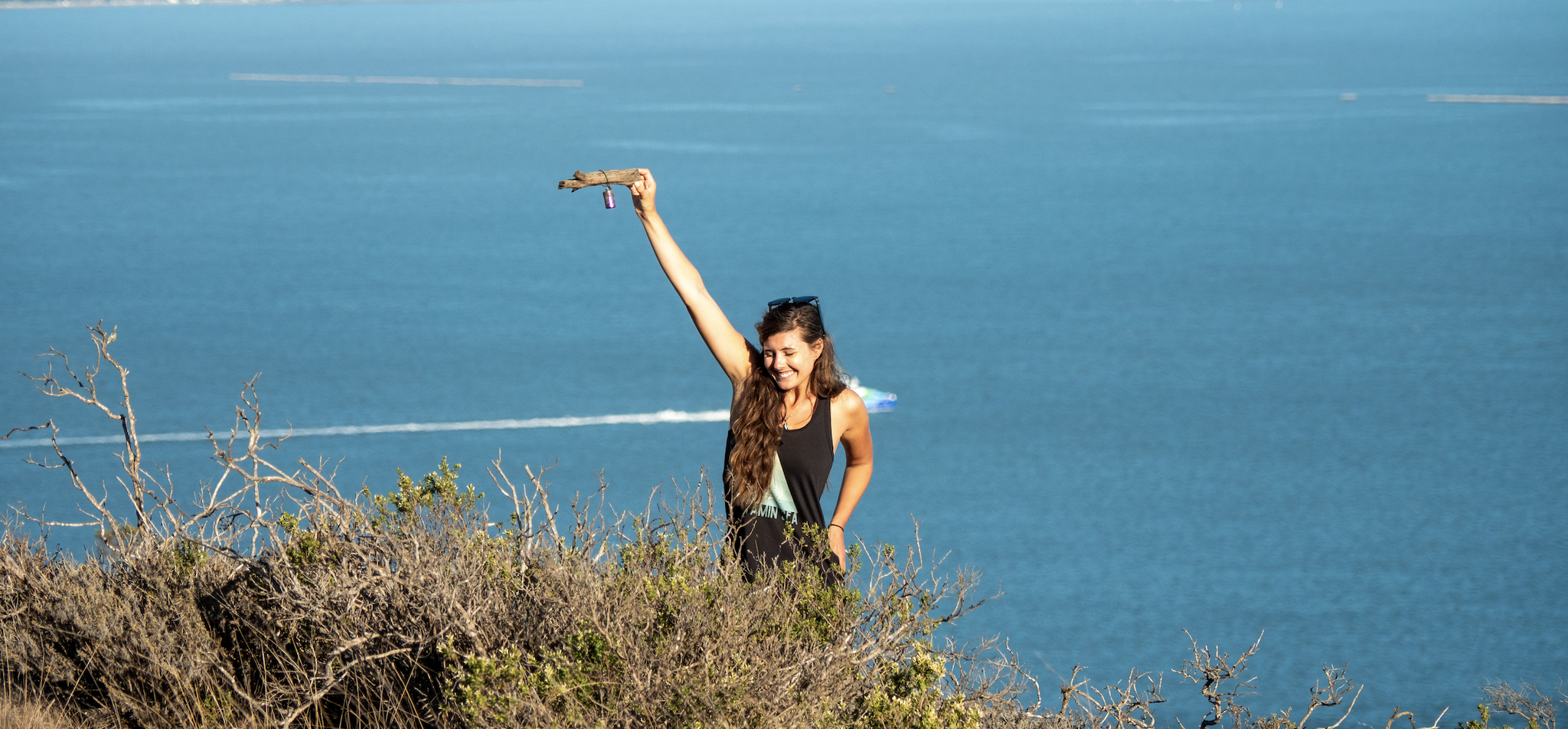
Found one!
The peak of Mt. Livermore is 788 feet tall and has a perfect 360 degree view of the entire bay area. The name of the peak comes from Caroline Livermore, a conservationist whose efforts in protecting the island led to Angel Island becoming a state park enjoyed by tens of thousands of visitors every year. It looked as if at one point there were some sort of radio tower as the tower itself laid horizontal on the ground while its foundation was crumbling and graffitied by degenerates. A small rickety picnic table sat uninviting near a shrub, but just beyond that on the lower slope was another vista with a romantic view of the Golden Gate.
Chris and I sat at the lower vista and talked while the camera captured a timelapse. The fog – that is so ingrained in San Francisco culture it has nearly become sentient after being given the name “Karl” by the locals – wrapped around the Gate, playfully reaching under it, through it, and over it, but never consuming it all at once. Karl’s foggy fingers stretched out touching the points of land nearest to the gate, replacing our view of the city with the airy color gray.
The sun had started to fall lower in the sky, our signal to begin our trek down the mountain using the Sunset Trail. Along the way I discovered two more geocaches, strategically hidden within the landscape to make for a fun find. Back on the shore, we saw Corey and Lucy were playing frisbee on the beach – the only souls around as the ferries had gone for the day. We joined them to watch the sun set, the glow of golden hour painting our boats in the mooring field with warm hues. When the sun was nothing more than a shrinking glow on the horizon I began to share what history I had learned throughout the day; specifically how haunted the island is.
“This place is called an island of immortals, but in fact, the mountain wilderness is a prison. Once you see the open net, why throw yourself in? It is only because of empty pockets I can do nothing else.” – A poem carved into the Angel Island Immigration Station barracks.
The tormented Asian experience remains immortal through the thousands of Cantonese poems permanently etched into the walls of the immigration station. With all of the negative energy created from the separation of families, the suicides, the fear, the sadness… It’s no wonder that Angel Island is considered to be one of California’s most haunted locations.
At least two documented deaths occurred at the Angel Island immigration station, with more having gone unreported. One was a laboring man from Antigua named John-Henry Stevens, who passed away due to hookworm infection (We learned more about him the following day on our bike ride around the Island’s perimeter). The second and perhaps most famous haunting of Angel Island is that of a young Chinese bride-to-be. She arrived at the immigration station with her soon-to-be-husband, hoping to start a new life in California. Unfortunately, the woman didn’t pass the ruthless interrogations and was sentenced to deportation.
She was so distraught by the decision that she went to her dormitory and put on her wedding dress – the one she would never marry in – and hung herself with a bedsheet in the women’s restroom shortly after. Following the tragedy, many of the immigrants staying in the dormitory reported feeling a sad presence in the bathrooms and experienced strange electrical issues. Many were so afraid of these happenings that they refused to shower alone.
However, one young girl had what is arguably the most terrifying experience with the ghost of the bride. She reported that she was awoken abruptly one night when an unseen presence started to press down on her chest. She was unable to breathe, and in a panic, she tried to scream. The pressure increased, as did the pain. The girl said she was only able to whimper a prayer, begging for her life. Soon the pressure stopped, and the girl was left alone in bed, gasping in a cold sweat. Many wonder if it was the young bride-to-be trying to kill the girl, angry that she was never able to enjoy her youth and that her life was cut short just before it began.
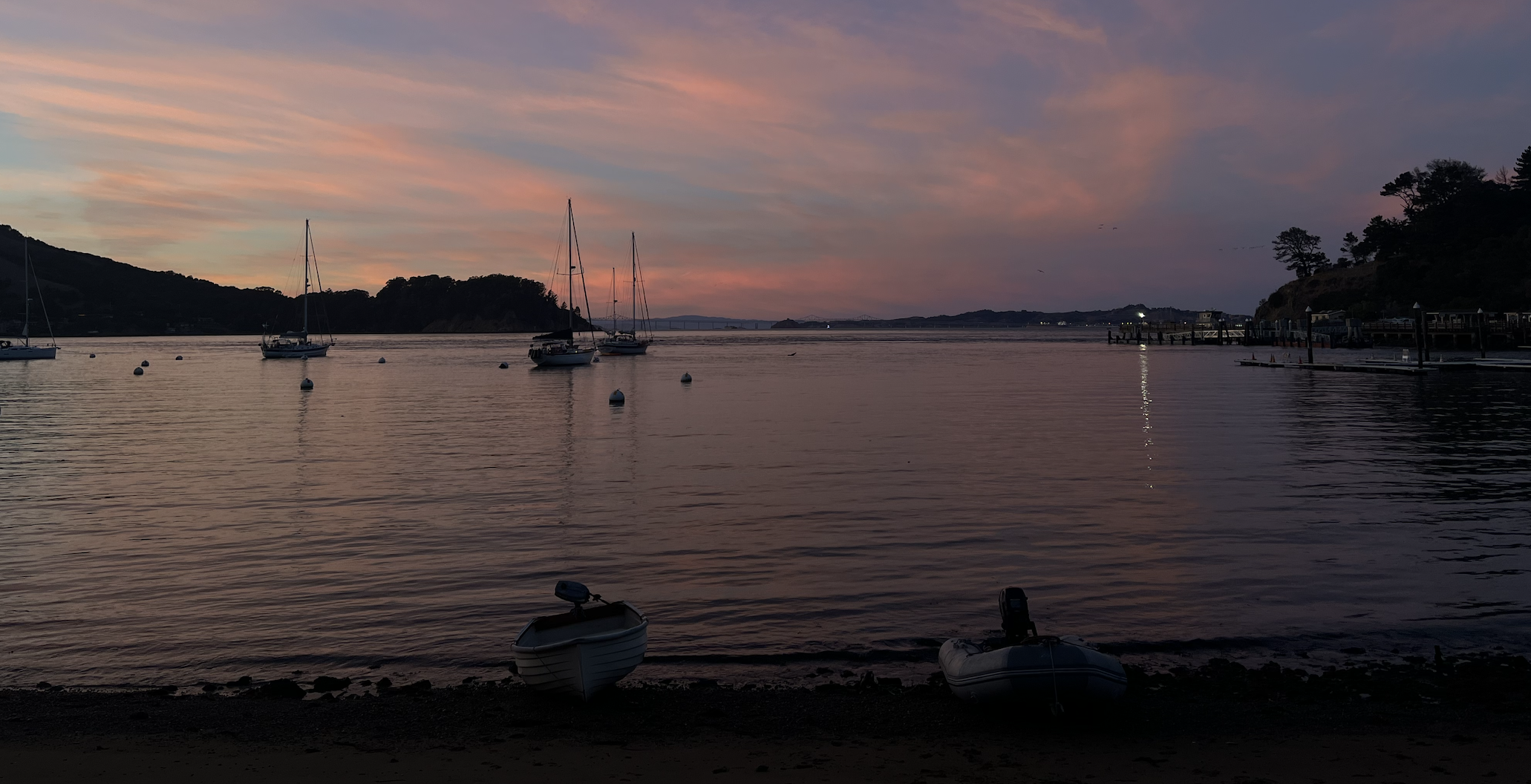
“That’s so sad,” Lucy said, hanging off my every word. As a curious fan of the supernatural, I enjoy learning about what local haunts may lurk in the shadows, adding a darker layer to the history of the places we visit. “We should go ghost hunting,” she said, and not a minute later coyotes began to howl in the dark hillside under the full moon, setting the spooky mood. Our eyes were as wide as saucers as we quickly took the possibility of ghost hunting off the table, replacing it with the idea of dinner.
Back aboard Avocet the evocative smell of curry brought memories of our near weekly “combo curry nights” with our pals Mitch and Quincey in Ventura, where each crew prepared a curry and shared it together before playing a round of cards. Just as I set my coconut curry on simmer, Corey and Lucy joined us with a full pot of white rice and butter chicken. After stuffing our faces we played a few rounds of our favorite Marble Game and had the crew of Chalet Mer sign our guest log before they returned to their boat. Chris and I went to bed that night feeling so full; of thanks… and food.
Earning Our Turns – Biking Angel Island
Chris was no stranger to Angel Island; having visited as a kid with his parents and partaking in a segway tour around the whole island. Chris remembers being a typical young boy, pushing the self-balancing scooter to its limits and paying the price in terms of roadrash and embarrassment. Luckily, the segway tours on the island were replaced by a bike rental shop if you can’t BYOB (Bring Your Own Bike) to offer visitors the opportunity to bike the 10 miles of available trails.
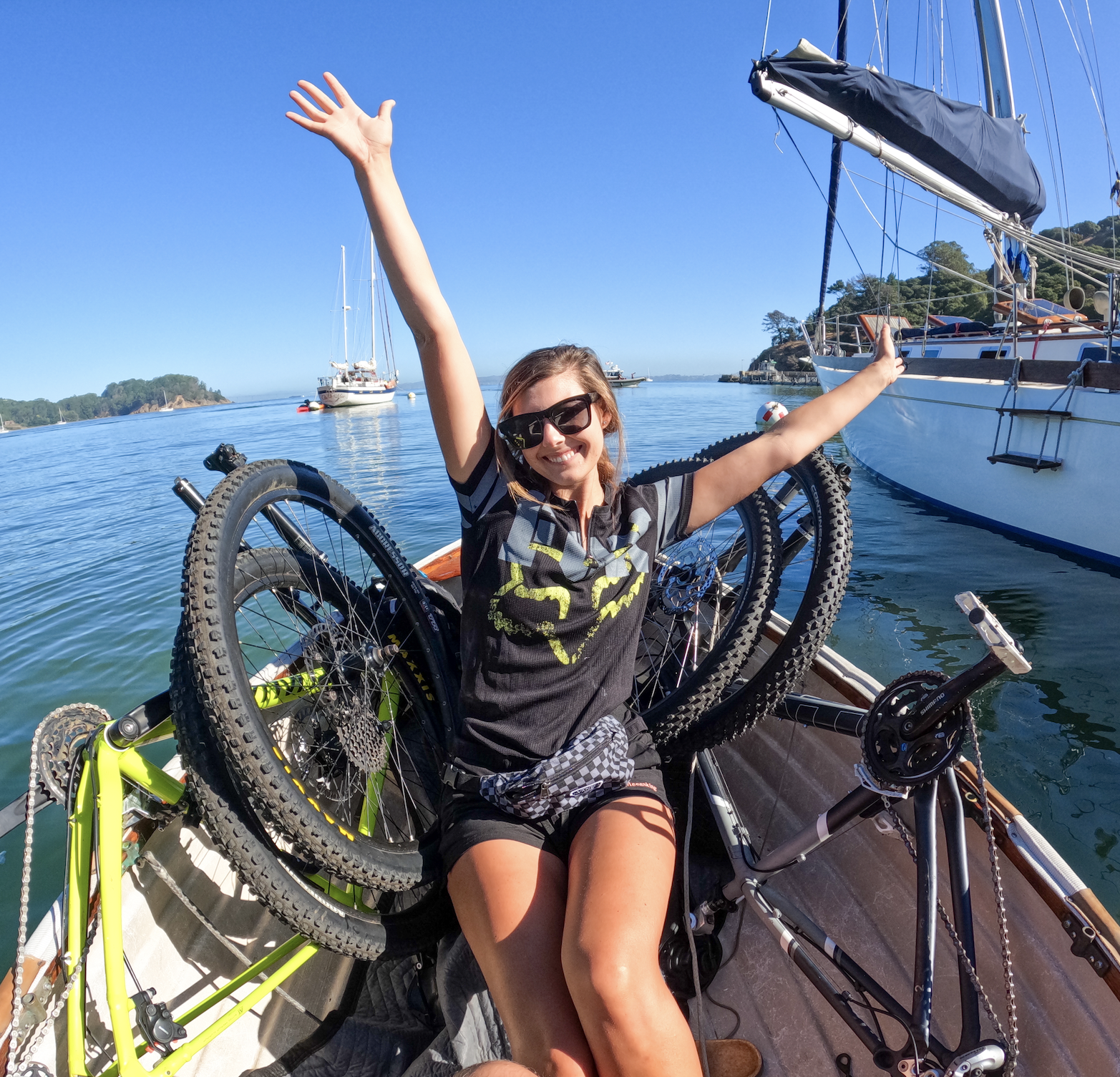 “See? You fit!” Chris said, trying to fight back a laugh. There I was, sitting in the bow of our Fatty Knees 8’ with two full sized mountain bike frames to my right, and all four tires to my left. Chris sat at the stern to drive us to shore. On the dinghy dock we unloaded our precious cargo and began building out our bikes, excited for the day ahead of us.
“See? You fit!” Chris said, trying to fight back a laugh. There I was, sitting in the bow of our Fatty Knees 8’ with two full sized mountain bike frames to my right, and all four tires to my left. Chris sat at the stern to drive us to shore. On the dinghy dock we unloaded our precious cargo and began building out our bikes, excited for the day ahead of us.
Although we were bummed that we couldn’t ride on the sweet single track we had hiked the day prior, we enjoyed sightseeing along the paved Perimeter Road. Our first stop along the way was to admire the beautiful and haunting brick hospital that was built in 1904 to treat ill or injured soldiers far away from the barracks to prevent the spread of disease. The building was heavily boarded up, keeping us out and perhaps whatever spirits were trapped inside. We thought it best not to medal and continued on our ride… but first Chris found a fun bit of dirt track to peddle up and bomb down with a huge grin on his face.
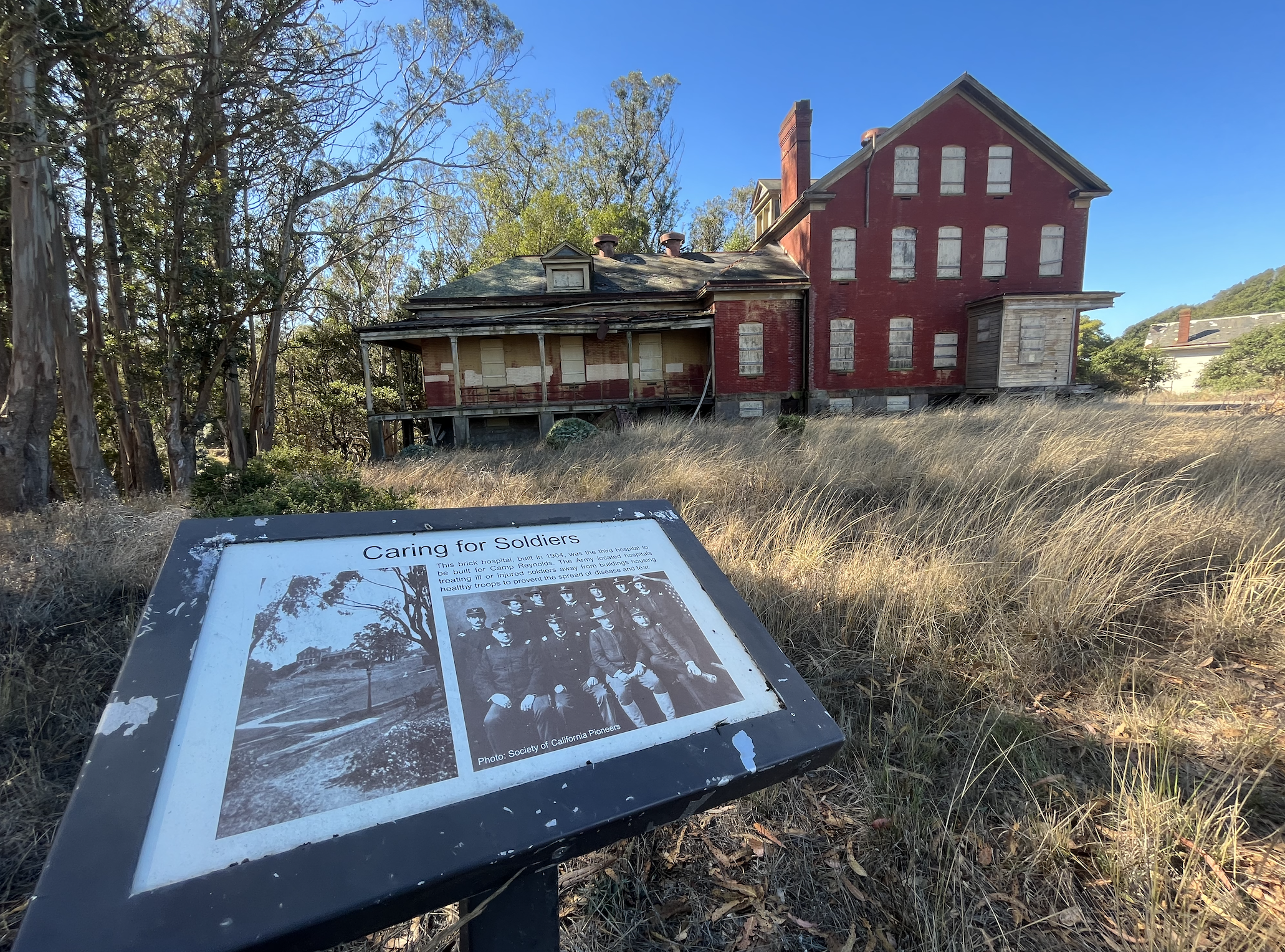
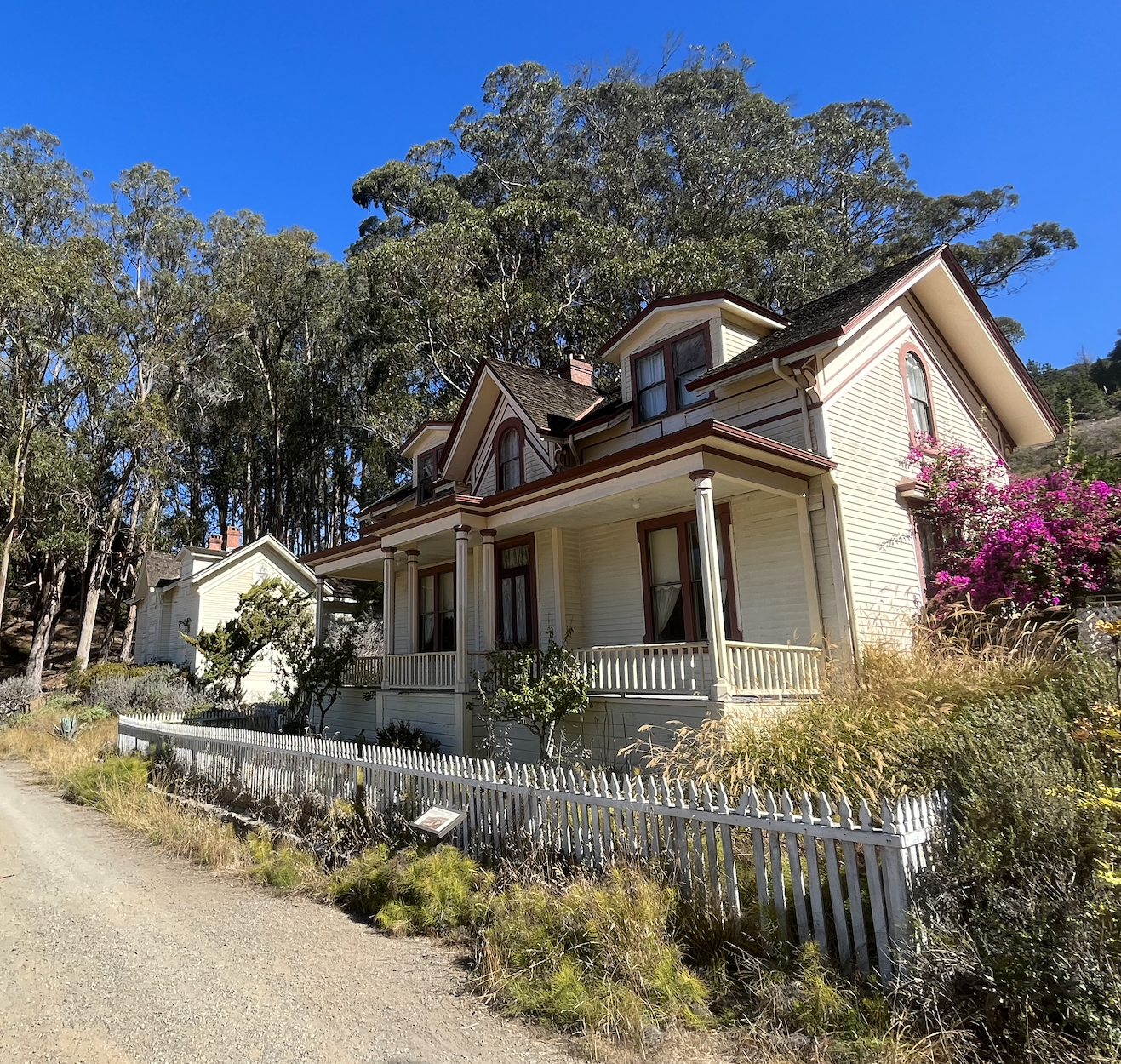 Right below the hospital is what is called West Garrison; the infantry camp that served as a depot for recruits, and as a staging area for troops serving in various bloody campaigns. By 1876, this busy camp had over 2,000 soldiers and complete military posts including a chapel, bakery, blacksmith, shoemaker, laundry, barber, trading store, and photographer. The wide open downward facing slope with a tall brick building sitting at the bottom caught my attention, but what really stole the show was the restored officers building #10 which was a stunning Victorian that I would move into in a heartbeat – ghosts and all. Below the home were identical white houses that were also officer quarters. The white uniform homes told what history they could through failing paint, wood rot, and termites – most of the construction dates back to 1864, and at the time of occupation each officers’ quarters would include two rooms and a kitchen. The wooden barracks that at one point stood parallel to the officers quarters were designed for 100 men each.
Right below the hospital is what is called West Garrison; the infantry camp that served as a depot for recruits, and as a staging area for troops serving in various bloody campaigns. By 1876, this busy camp had over 2,000 soldiers and complete military posts including a chapel, bakery, blacksmith, shoemaker, laundry, barber, trading store, and photographer. The wide open downward facing slope with a tall brick building sitting at the bottom caught my attention, but what really stole the show was the restored officers building #10 which was a stunning Victorian that I would move into in a heartbeat – ghosts and all. Below the home were identical white houses that were also officer quarters. The white uniform homes told what history they could through failing paint, wood rot, and termites – most of the construction dates back to 1864, and at the time of occupation each officers’ quarters would include two rooms and a kitchen. The wooden barracks that at one point stood parallel to the officers quarters were designed for 100 men each.
At the base of the hill we inspected the large brick building, which we later learned was the orderly room, with broken windows and nothing but darkness inside. Honestly, it made my skin crawl so we rode our bikes over to the small spit of beach right beneath one of the many batteries on the island. “Isn’t it crazy to think there was a cannon stationed here?” Chris asked, inspecting the area inside and out. The cannon would have been pointed directly where the Golden Gate now stands in all her glory, waiting to protect the bay from attack.
Having returned to sea level to investigate the orderly room, we had to bike back up the hill we rode down which was a pretty significant slope. I shifted my gears and peddled as hard as I could to gain altitude but eventually called it quits, jumping off my bike and taking the walk of shame. As we continued along the Perimeter Trail we came across another battery on the west side where we discovered a geocache and listened into the tram tour that was passing by.
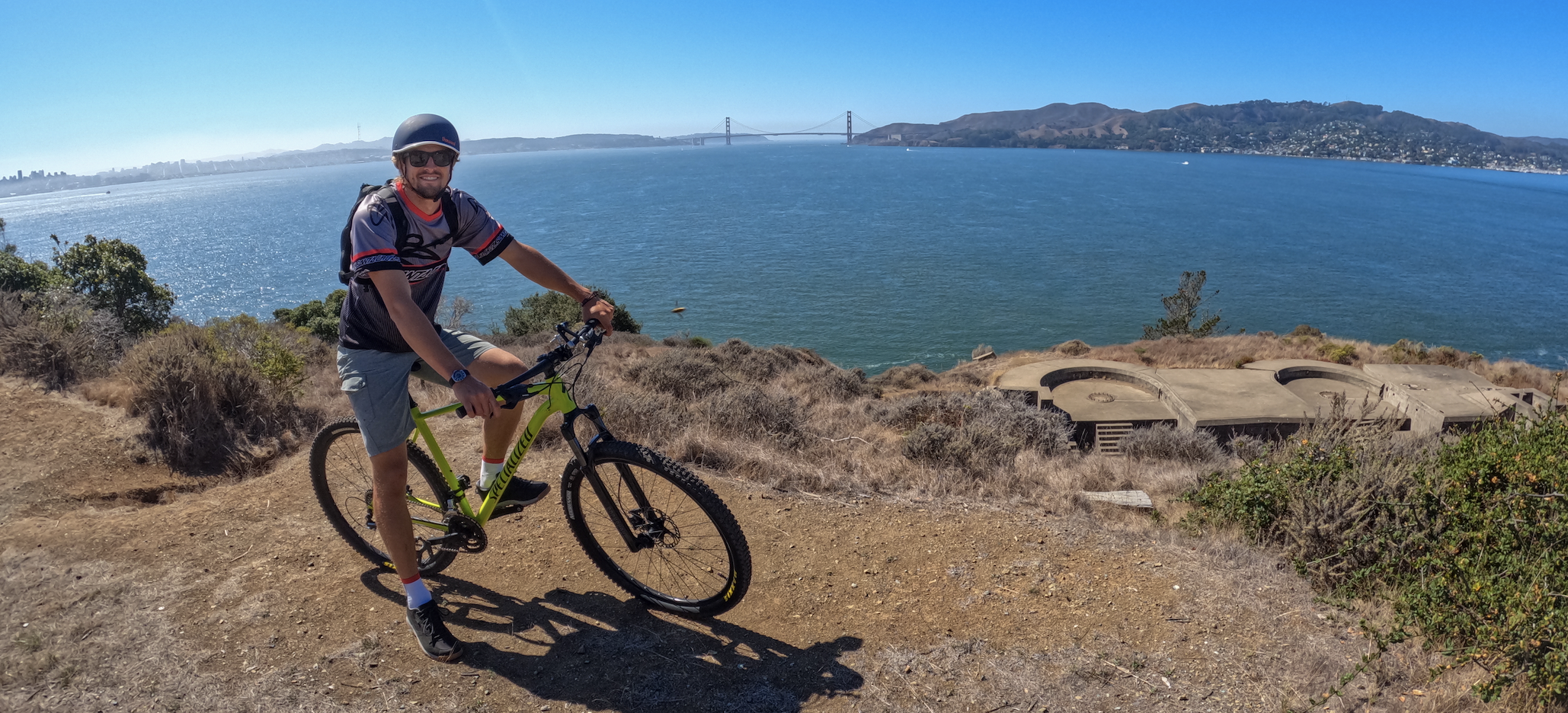
Chris above the battery
“Battery Ledyard was erected on the site of the old Point Knox Civil War battery, and armed with two five-inch rapid-fire guns. The battery was named on February 14th [Marissa’s birthday] 1902, after 1st Lt. August C. Ledyard, 6th U.S. Infantry, who was killed in action on the Philippine Islands on the 8th of December in 1899. Battery construction started and was completed in 1900. The battery was transferred to the Coastal Artillery for use on August 1st, 1900 at a cost of $20,044.58. The site was deactivated in 1915 when the guns and carriages were removed.”
As we rounded the island we finally arrived at the infamous Immigration Station, where we locked out bikes up outside the gate and walked in quietly to not disturb the deer that feasted on shrubbery nearby. The fire in 1940 may have burned down the administration building, but there is still 14.3 acres to explore including the beach, outdoor exhibits, and the two museums at the site; the barracks and hospital.
The barracks and mess hall museum is where visitors will learn about the history of immigrant detention and exclusion by walking through recreated living conditions for the 300,000+ detainees that were held for weeks, months, and sometimes years on Angel Island. Unfortunately, this museum was by admission only and we had biked without our wallets – and were on a budget anyways. However, you can take the virtual tour online for free, which is where I learned a great deal for this very blog post. We admired the large multi level building from the outside before walking to the shoreline through the foundation that would have been the administration building.
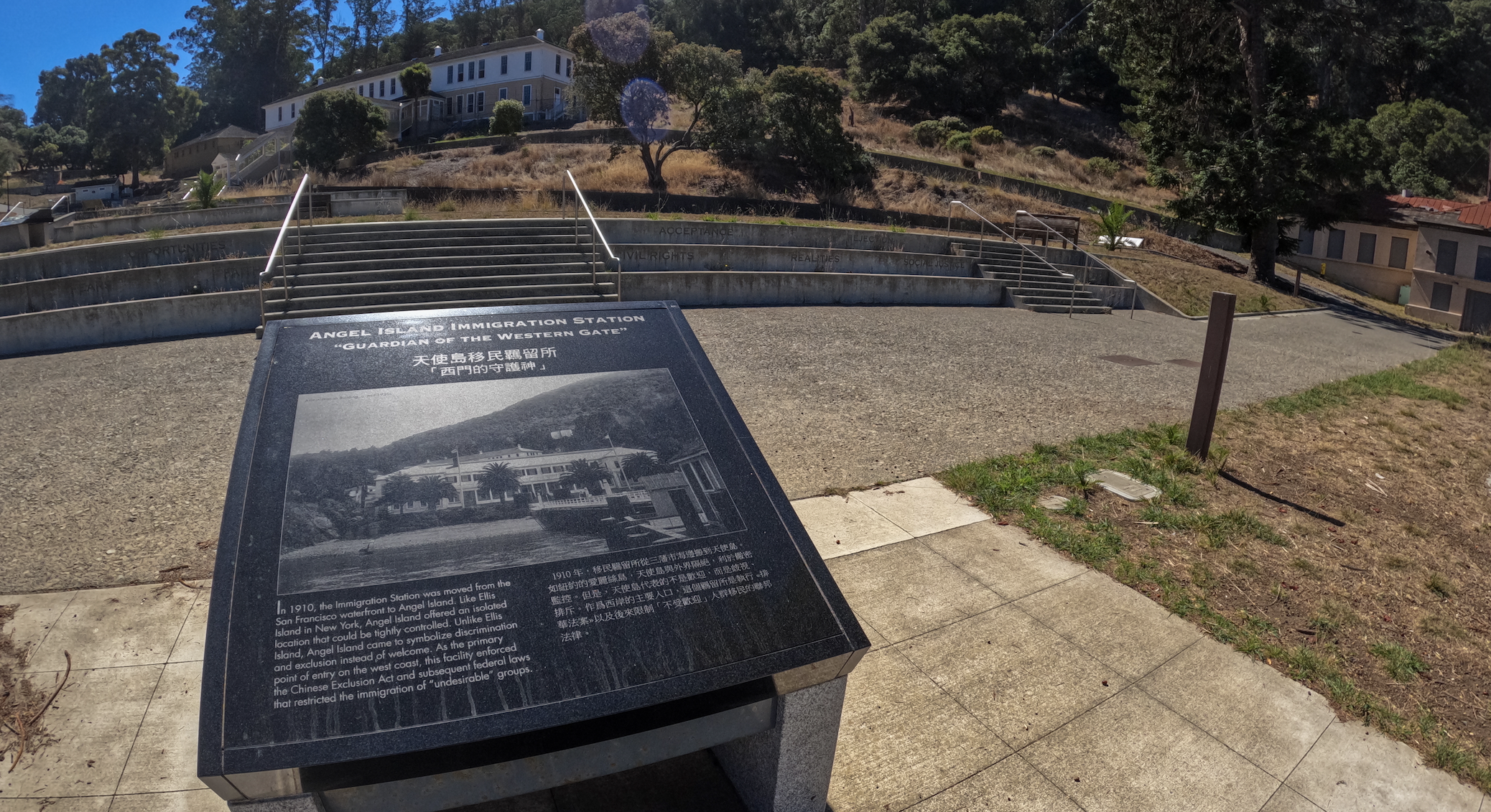
A sailboat, that we identified as a Freedom 40, was anchored in the still anchorage known as China Cove. A bronze fog bell stands where thousands of immigrants first walked on U.S. soil, the bell stamped with “U.S. Immigration Station, Angel Island, CAL 1910.” It was a heavy, solemn feeling as we stood where so many did before us; hoping for a better life of new opportunity but often being met with a nightmare of racism laced abuse. The Immigrant Heritage Wall was to our left, a memorial consisting of over 300 plaques intended to honor the stories and experiences of immigrants who passed through Angel Island on their way to becoming American citizens. Above the heritage wall stands another memorial commemorating the Chinese immigrants and their experiences. It reads: “Leaving their homes and villages, they crossed the ocean only to endure confinement in these barracks. Conquering frontiers and barriers, they pioneered a new life by the Golden Gate.”
Across from the barracks is the hospital building, which was restored in the early 2000’s when California voters approved a state bond measure of $15 million to rehabilitate the Immigration Station. Priority on the project was given to the detention barracks and the location of the former administration building. Both areas were deemed critical for the interpretation of the site and for increasing visitor accessibility. Although this first phase of the project was completed in 2009, the hospital building wasn’t completed until a decade later.
The hospital building had deteriorated over the decades, but it was seen as a promising location for a future museum. In 2005, President George W. Bush signed the Angel Island Immigration Station Hospital Preservation and Restoration Act. The Act authorized up to $15 million to be allocated towards saving the hospital. It also helped push the project forward, making it a for-certain reality.

Immigration Hospital (Photo Angel Island Conservancy)
Chris and I thoroughly enjoyed touring the hospital museum, which was not only FREE but also vastly fascinating sharing the details of treatments, past medical practices and even how architecture played a role in wellness. In each ward, the walls were crowned by a coved ceiling which was thought to be beneficial for expelling disease from the rooms. Doctors believed that corners would decrease air circulation and harbor germs. In addition, each ward had nine foot windows to admit light for detainees as they recovered from treatments. A wonderful display was set up inside of one of the wards, showcasing the unique architecture and natural light with a view of the ocean. We were the only two (living) souls in the museum, and the silence was overwhelming as we stood in a room that many had gone under the knife in, including one man who I mentioned a bit earlier: John Henry Stevens.
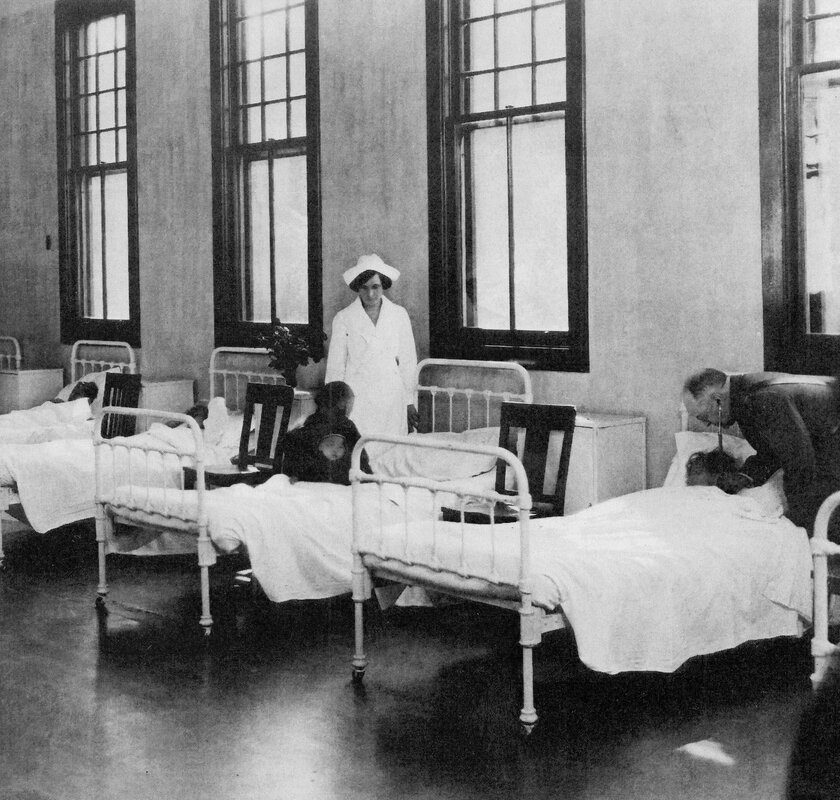
Inside the hospital ((Photo Angel Island Conservancy)
It was in this very hospital that the Antiguan native Mr. Stevens had been admitted to after he arrived on the island in 1914. He was one of the many Panama Canal workers that arrived in San Francisco to be infected with “uncinariasis” caused by hookworm, a parasite which was widespread in tropical and subtropical regions of the world. At the time it was classified as an excludable disease, but immigrants could apply for hospital treatment, which, if effective, permitted entry into the country. A $50 deposit was required for treatment, and fortunately Stephens had brought $55 with him and his treatment in the end cost $8.75 (seven days at $1.25 per day). However his stay in the immigration hospital turned out to cost him more than money. He was “placed in the hospital for hookworm treatment in the same ward from which [another immigrant with hookworm disease] had been taken, the ward having meanwhile been disinfected.” The original occupant of the ward, a Japanese resident of Los Angeles, Honda Suichi, returning from three months in Japan, in the course of being treated for the hookworm parasite developed “epidemic cerebrospinal meningitis” and was taken to the isolation hospital in San Francisco, where he subsequently died. Stevens had also become infected; and two weeks after arriving at San Francisco, he passed away. What an unfortunately ironic turn of events: after surviving for seven years in Panama, in an environment with an extremely high worker mortality rate, Stevens succumbed to an infection at the Angel Island Immigration Station.
What followed his death is documented in the museum with a paper trail of Shakespearean drama between the government and Stevens’ surviving wife that was still in the South Pacific, unaware of her husband’s death; I won’t spoil it for you, check it out for yourself! As a person who has survived spinal meningitis I cannot even begin to imagine what Stevens was thinking in his final days, and what pain he was in with the lack of medical knowledge we have today. As a result of the deaths San Francisco Immigration Commissioner Backus removed “all inmates of the detention buildings, about 150 in number, to the quarantine station for fumigation of both their persons and belongings, and in their absence have sealed all the buildings and given them a thorough fumigation.” He also stressed the need for an isolation ward to prevent deadly cases, like Mr. Stevens, from spreading.
We left the Immigration Station with more knowledge than we had entered with, admiring how the State Park Service was able to turn such a stain on American History into a highly teachable location – honoring those who suffered before we, as a society, learned how to be better people. All in all, if you have the opportunity to explore Angel Island I strongly recommend taking the time to walk through the Immigration site with respect, and share your newfound knowledge with others so we can make sure this history will never repeat itself – oh, and bring $5 for the museum!
Our bikeride continued along the east end of the island as we passed through Fort McDowell, also known as East Garrison, where A Detention Camp was established next to the quarry, in 1899 to house returning troops who had been stricken with, or exposed to, contagious diseases including smallpox. In the summer of 1909, major construction began on what had been the site of the Discharge Camp and Fort McDowell expanded into a Recruit Depot. In just a few years, a 600-man barracks, a new Hospital, a Mess Hall, officers’ quarters, a guard house, and other buildings were constructed – and still (mostly) stand to this day, although many of the officers’ quarters are now occupied by park rangers.
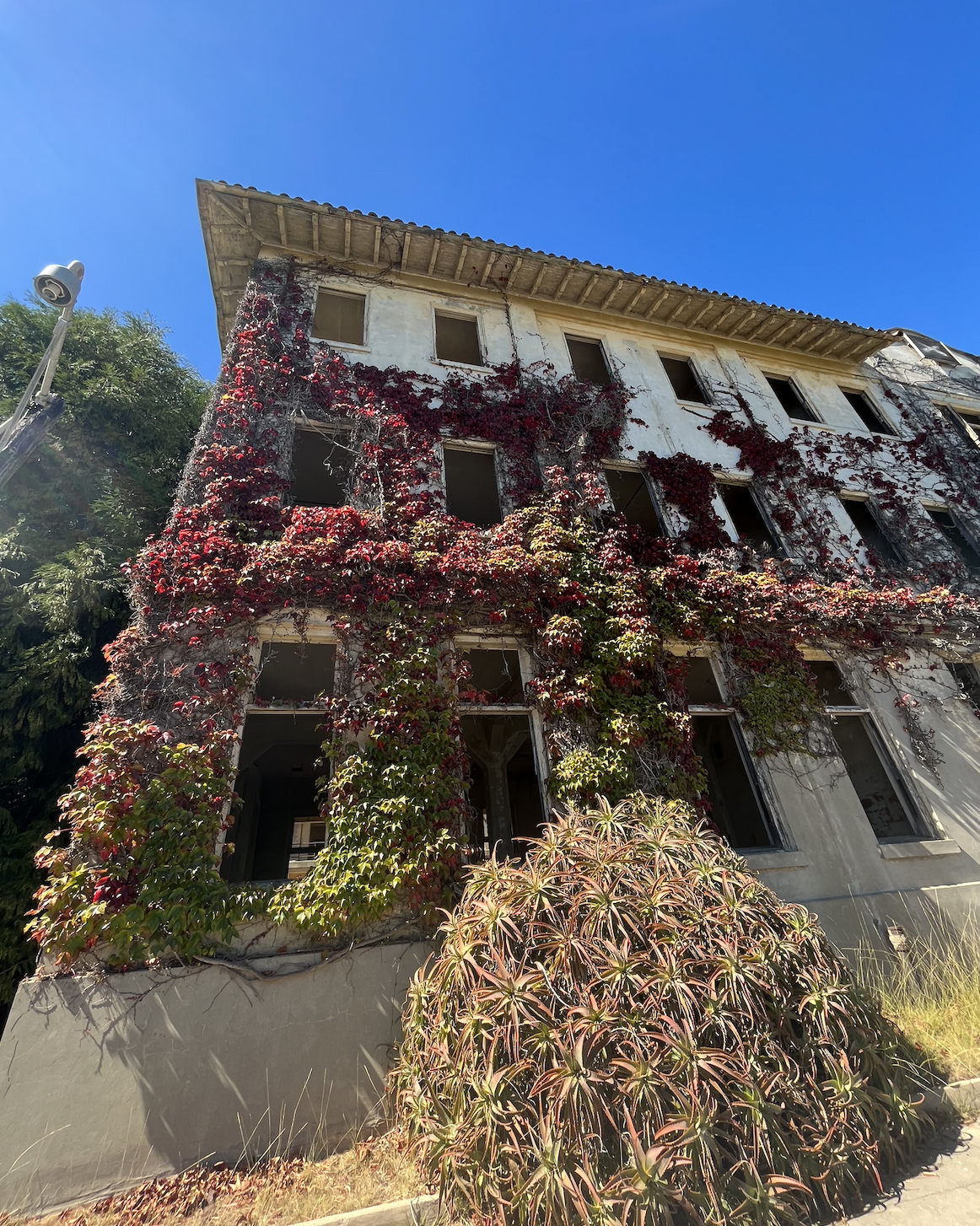 Of course we had to stop and investigate the hospital that, unlike the freshly restored Immigration Station Hospital, had fallen into disrepair. Concrete crumbled all around with ivy crawling up the walls, stretching into broken windows as Mother Nature took over what was rightfully hers to begin with. There were no doors to keep us out, so we welcomed ourselves into the 100 year old lobby of what once ushered thousands of troops from both World Wars and Cold War in for treatment. The building was later converted to a Nike Missile command post in 1954. The military hung a wooden sign with a crossed cannon artillery symbol over the hospital’s caduceus medicine emblem at its two decorative front-facing gables – we could still catch a glimpse of the medical icon behind the facade of the military sign.
Of course we had to stop and investigate the hospital that, unlike the freshly restored Immigration Station Hospital, had fallen into disrepair. Concrete crumbled all around with ivy crawling up the walls, stretching into broken windows as Mother Nature took over what was rightfully hers to begin with. There were no doors to keep us out, so we welcomed ourselves into the 100 year old lobby of what once ushered thousands of troops from both World Wars and Cold War in for treatment. The building was later converted to a Nike Missile command post in 1954. The military hung a wooden sign with a crossed cannon artillery symbol over the hospital’s caduceus medicine emblem at its two decorative front-facing gables – we could still catch a glimpse of the medical icon behind the facade of the military sign.
The chill autumn breeze whistled through the open windows and doorways as light flooded the empty corridors. Chris investigated one end while I carefully read the various graffiti left by those before us; some chillingly poetic and others as basic as “Redrum”. There is not much left of this historic site: just corroded pipes and vents, a defunct heater, and remains of porcelain sinks and toilets. The stairwells have been removed for safety, and as you look up the stairwell there is no doubt why. The building has a discombobulating atmosphere that is not entirely friendly nor scary… if only the walls could talk I’m sure they would make the decision for us, telling tales of tragedy that would even make Stephen King shiver. Residents and visitors have passed down ghost stories around the hospital and military base for generations – and I am surprised that Ghost Adventures have not had a lock-in episode here.
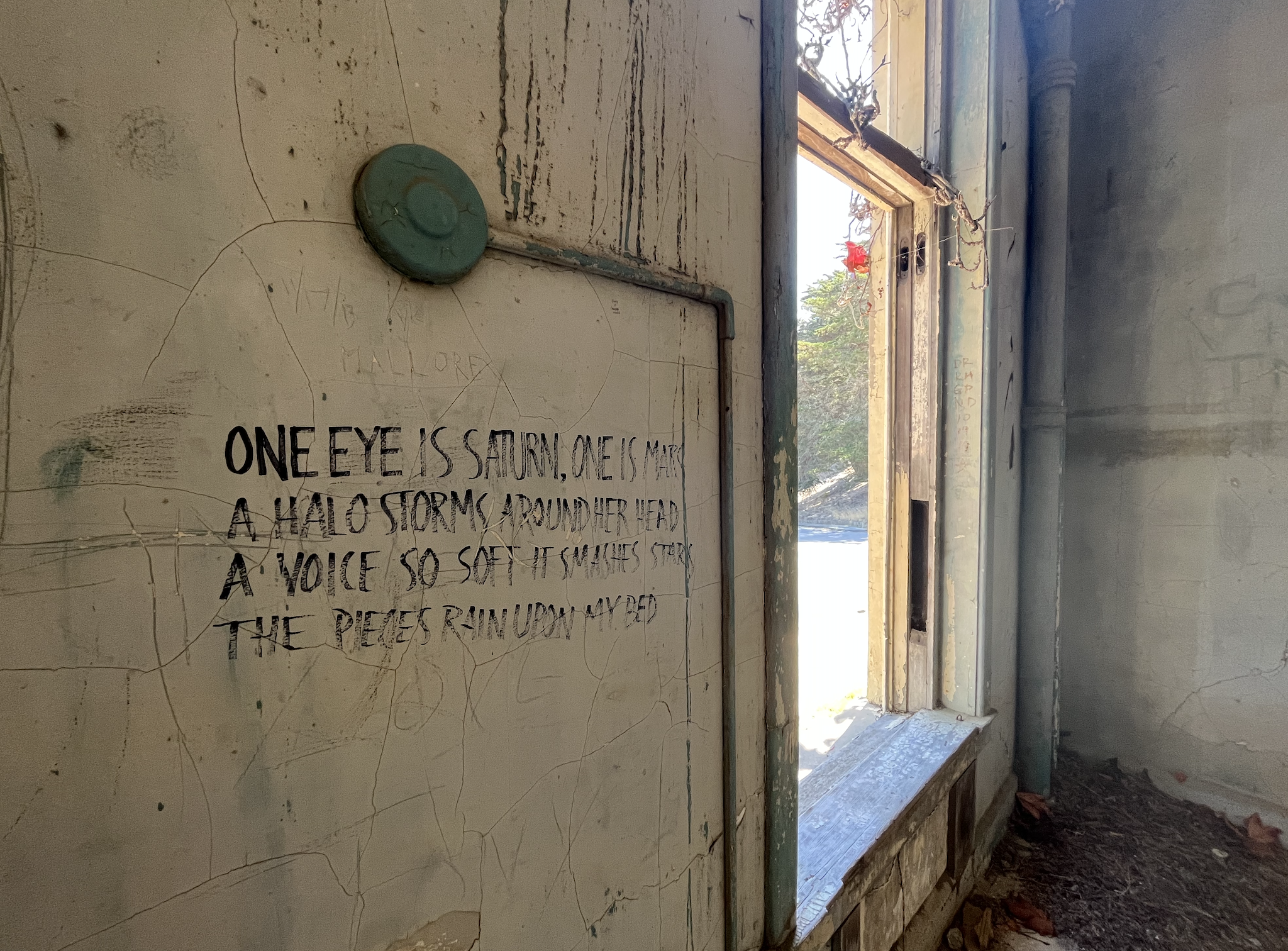
“Not another hill” I gasped as my gears shifted rapidly. The chilling hospital and East Garrison was behind us as we came back around to “our” side of the Island. It was about there we peddled up to the dirt Fire Road Loop that encircles the island a few hundred feet above the paved road to remember what dirt felt like under our tires, then dipped back down to the perimeter road where we had started our day in Ayala Cove.
The last ferry of the day was leaving the island after the visitors boarded the boat like cattle. As they left, the island fell nearly silent with only the sounds of nature filling the dead air. We spent our final night anchored off the island being serenaded by the crickets under nightfall with booming howls from coyotes hidden in the hillside. The moon was full casting its silver glow on the water that reflected off our hull, as the gentle rocking from the tidal surge lulled us to a deep sleep.
Farewell Angel Island
Sun shone through our stateroom window beaming me right in the face – an inescapable problem that we will surely address one of these days, but on our final morning I took it as a warm welcome to start my day. Coffee bubbled in the percolator while we began preparing the boat for our departure.
The day prior the park ranger mentioned we could side tie to the dock to fill up water, a request we could tell was not common by the unsure look on her face. Soon we detached from the mooring balls and carefully navigated to the dock passing over some very shallow areas even at high tide (our minimal sounding was 6 feet!) With one tank full we went to fill the second when our hose shredded itself into many unusable pieces. “Well… that will have to hold us for a while” Chris said while collecting what was left of the hose to dispose of in the trash.
With the aggressive current we had to be strategic with our dock exit; I remained on the helm while Chris released the bow line, letting our bow pull away from the dock, keeping a tight grip on the stern line until we were in a position that was clear of the ferry dock. He jumped on at the last minute which made my heart race but once again he proved to me that I was capable of tight quarter maneuvering, even when it made me extremely uncomfortable. Our friends aboard Chalet Mer waved to us from their bow as we made our escape towards the channel. It was sad to leave them, but it wouldn’t be our final farewell.
The wind was blowing a steady 25 knots as we sailed with full canvas across Raccoon Straits. Avocet screamed through the turbulent waters under the cover of sunshine, putting a fat smile on both of our faces. Our next anchorage, Richardson Bay, was just a stone’s throw away, but our short transit was one of the best days sailing we had in the bay area.
Although considered the “less famous” Alcatraz, Angel Island’s great trails, historical buildings and diverse recreational opportunities make the island an underrated gem in the midst of San Francisco’s urban landscape. This location exceeded both of our expectations. Its carefully curated interpretation signs made our self-guided tours a breeze and inspired us to dig deeper to uncover other stories about time long ago on the mysterious island. Being able to bike the entire island was also a true gift, making our stay there all the more special. If you ever have the opportunity to visit Angel Island for a day trip, boat trip or even camping trip we cannot recommend it enough! Just be sure to bring a good pair of walking shoes, sunscreen, water and the excitement to learn something new – we promise you will not be disappointed.
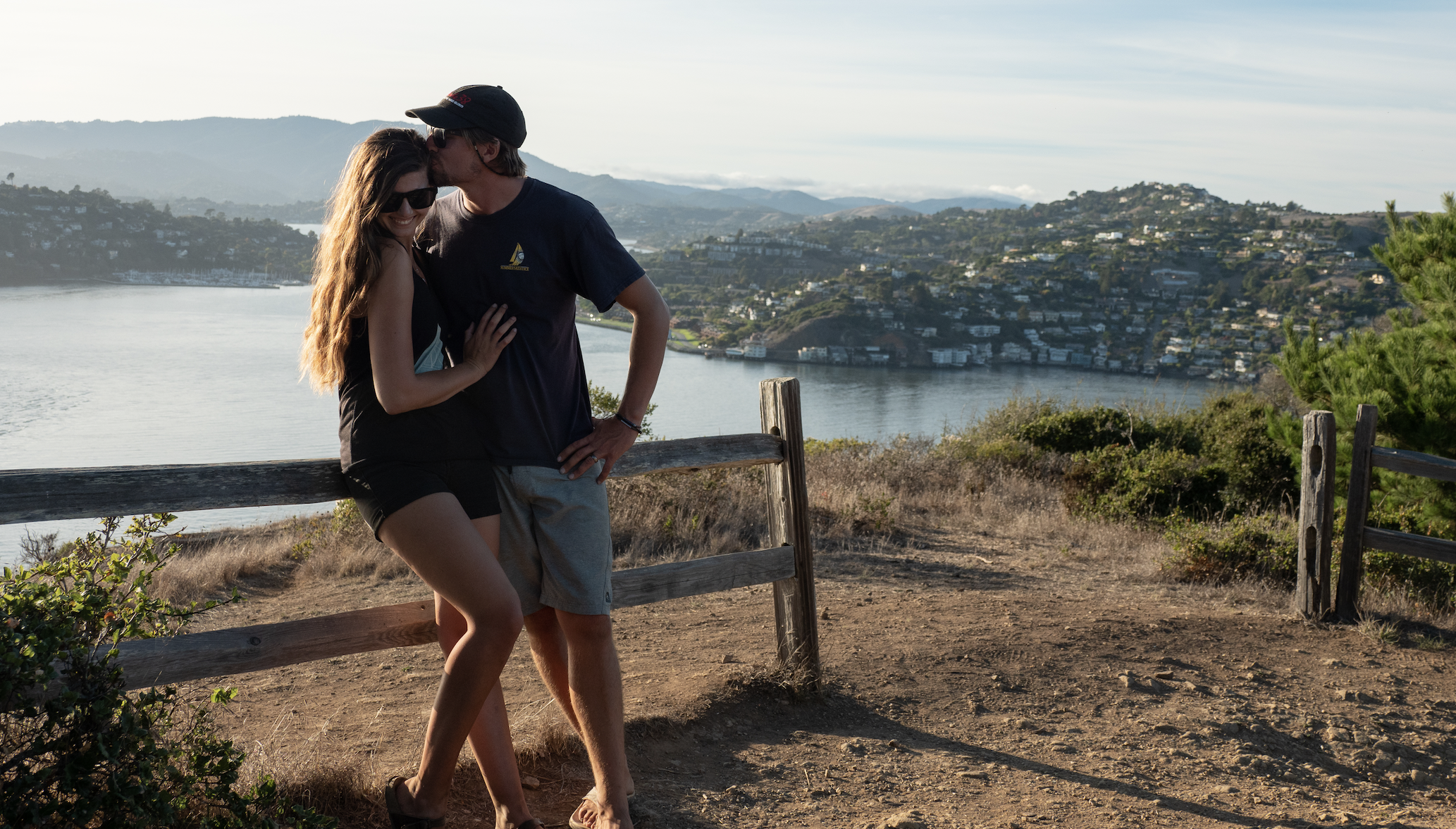
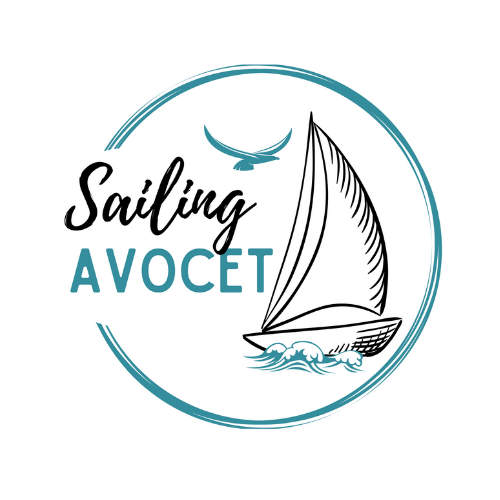
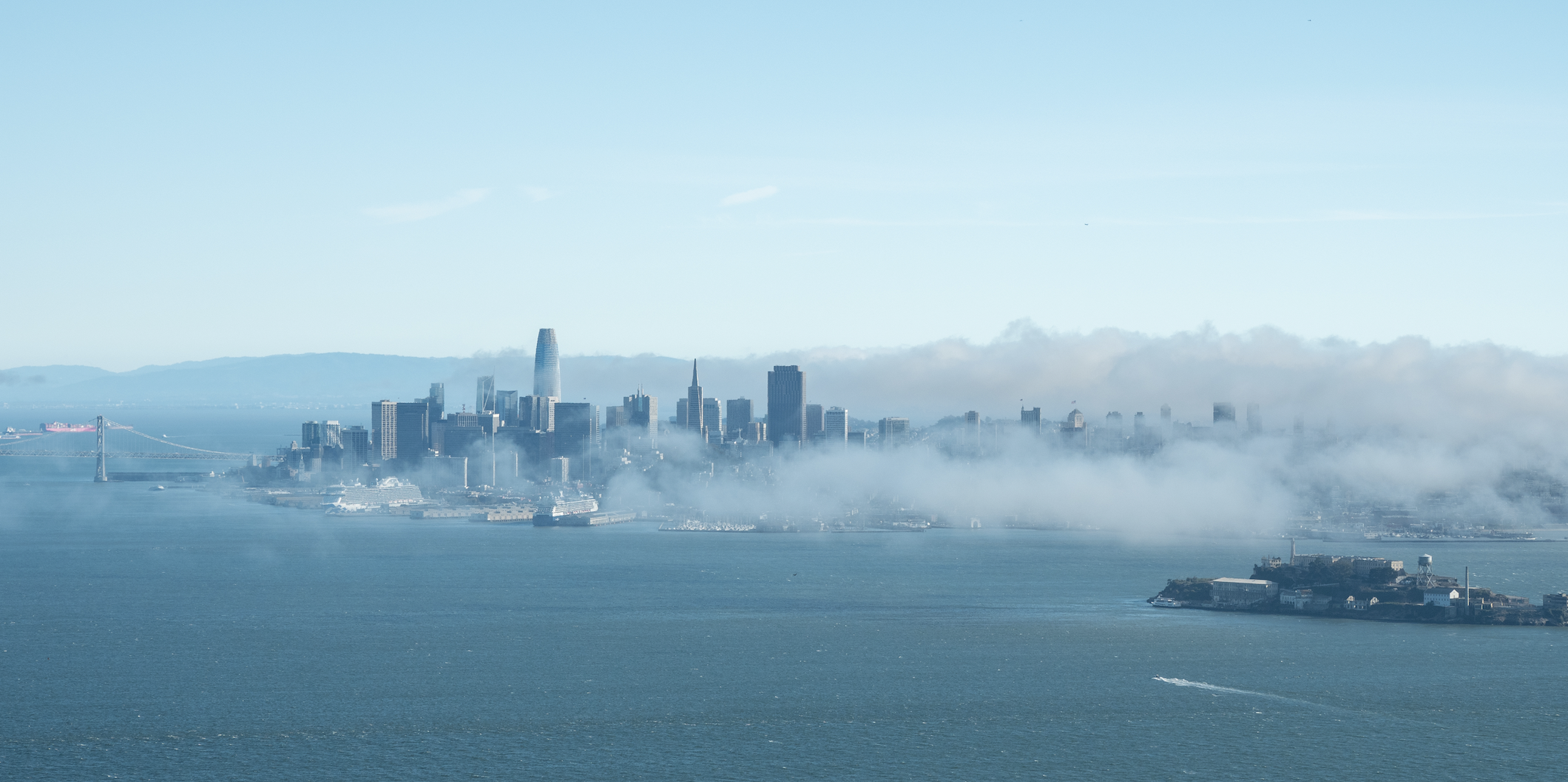


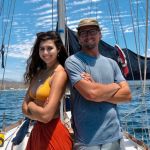

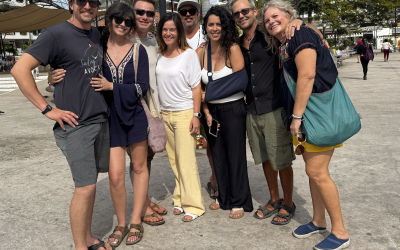
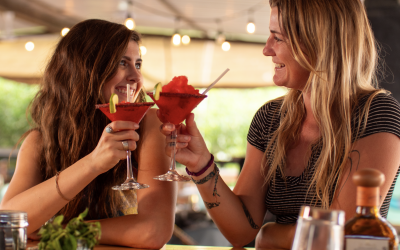

0 Comments